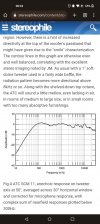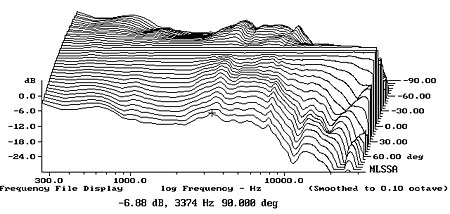On axis not, off axis the tweeter rolls of quickly above 8 kHz though, see the blue curve:
View attachment 230322
Source:
http://studio-hifi.com/20191209-old-site/images/SCM40-stereoplay419.pdf
I haven't read the article, but If that measurement is done in a lightly treated room or a "living room" that behavior is completely normal: those measurements are typically more room than speaker.
What happens is that often they measure free standing speakers in "normal" or lightly treated rooms using
un-gated impulse responses (and this is a crucial problem they too often don't know about). So the frequency response will look tilted at high frequencies: the direct sound field dominates at HF as dispersion is typically narrower at HF (and hence room contribution is delayed and reduced in that range) but as you gradually move towards lower frequencies the dispersion gets wider, the amount of energy released increases and the room reflections will contribute a lot more and earlier (e g. SBIR) to the direct sound which affects the response curve in
un-gated measurement: it's the HF tilt you see,
even in nearfield measurements.
It is certainly the case if on top of this for some odd reason you average a series of un-gated, off axis responses from normal living rooms (completely useless data).
A room "tilt EQ".
All this to say that non anechoic, "living room" measurements of free standing speakers can trick and mislead you easily if you're not paying attention to what you're measuring. To get a somewhat "sufficiently accurate" response is more complex than just popping a mic and sending an impulse response. Among other things you need to set the gate time of the system so you can remove room interferences as much as possible within the given frequency range you're interested in.
Otherwise most of what you see is simply the room and objects in the room (even the body of the person doing the measurements) having more or less interaction with the impulse response coming out of the speakers. One should always keep in mind the sound diffraction laws too, especially when dealing with HF in DIY measurements.
Within non-lab conditions tilted and / or non linear HF response might be “correct” if looking at the entire
un-gated impulse. If you're simply moving the mic off axis from the speakers to try to get the tweeter's off axis response: you're also changing the relationship between direct sound and room contribution. If you were to properly gate the on and off axis measurements to focus on the direct HF range (
so reduce the gate time) you might very well notice that the higher frequencies measure a lot flatter than you thought on and off axis.
These things can be quite tricky.



